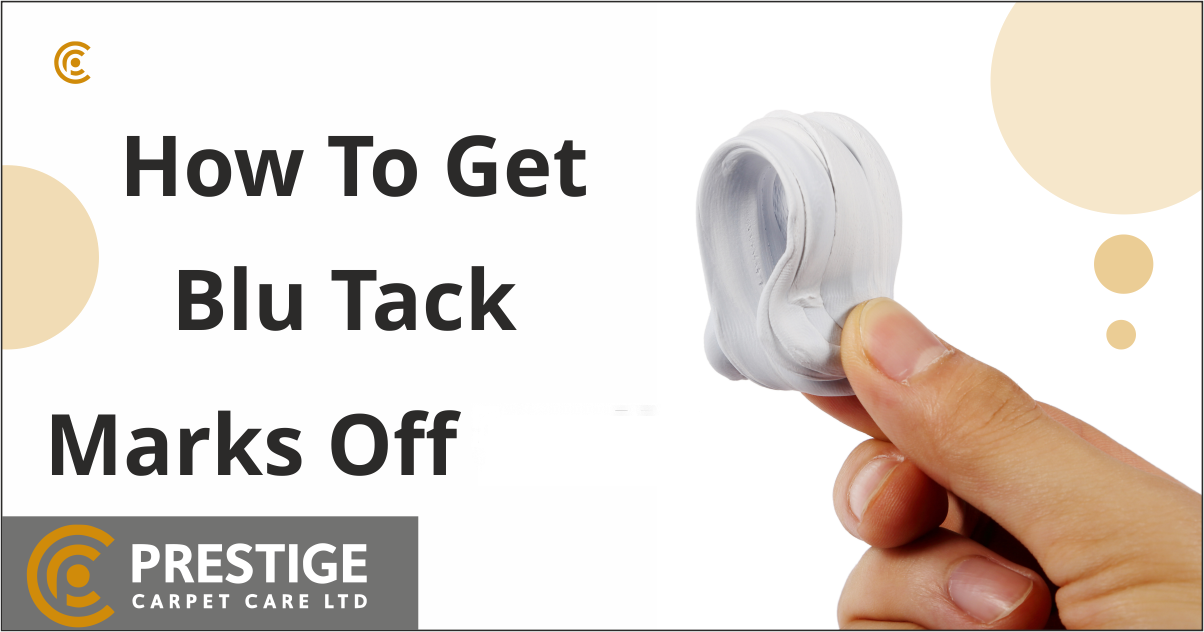
Blu Tack is a handy adhesive, but when it gets stuck in carpet fibres, it can be difficult to remove. Whether it’s been accidentally pressed into the floor or left behind a sticky residue, proper cleaning techniques can help restore your carpet.
In this guide, we’ll walk you through quick and effective methods to remove Blu Tack from carpets and prevent permanent damage.
Why Does Blu Tack Stick to Carpets?
Blu Tack contains mineral oil, which makes it sticky and pliable. While this is great for keeping posters or decorations in place, it also means Blu Tack clings to carpet fibres. Over time, it can break down and leave an oily stain if not removed properly.
Additionally, high foot traffic areas can push Blu Tack deeper into the carpet, making it harder to extract. That’s why it’s best to act quickly to remove it.
Step-by-Step: How to Remove Blu Tack from Carpets
Things You’ll Need:
✔ A dull knife or spoon
✔ Warm water
✔ Laundry detergent or mild dish soap
✔ A soft cloth or sponge
✔ A hairdryer (optional)
✔ White vinegar or citrus-based cleaner
Method 1: Using Warm Water & Detergent
1️⃣ Scrape Off Excess Blu Tack – Use a dull knife or spoon to gently lift as much of the Blu Tack as possible. Avoid pressing too hard, as this can push it deeper into the fibres.
2️⃣ Apply a Detergent Solution – Mix a few drops of laundry detergent with warm water. Dampen a soft cloth or sponge, and gently blot the affected area.
3️⃣ Let It Sit for a Few Minutes – This allows the detergent to break down the sticky residue.
4️⃣ Blot & Rinse – Use a clean damp cloth to remove the detergent solution. Make sure not to oversaturate the carpet.
5️⃣ Dry the Area – Pat the area dry with a towel and let it air dry completely.
Method 2: Using Heat to Lift Blu Tack
🔥 Heat can soften Blu Tack, making it easier to remove.
1️⃣ Use a Hairdryer – Hold it a few inches above the Blu Tack and apply heat for about 20-30 seconds.
2️⃣ Peel It Off Gently – Once softened, use your fingers or a cloth to pull the Blu Tack off.
3️⃣ Blot with a Mild Cleaner – If any residue remains, apply a mixture of warm water and dish soap, then blot with a cloth.
Method 3: Removing Oily Stains with White Vinegar
If Blu Tack has left an oily stain, vinegar can help lift it.
1️⃣ Mix Equal Parts White Vinegar & Water – Dampen a clean cloth with the solution.
2️⃣ Blot the Stain Gently – Avoid rubbing, as this can spread the stain further.
3️⃣ Wipe with a Damp Cloth – Once the stain is gone, use a separate cloth and warm water to remove any vinegar residue.
When to Call a Professional Carpet Cleaner
If Blu Tack has been deeply embedded or has left behind a persistent stain, a professional carpet cleaning service may be the best option.
✔ Deep extraction cleaning can lift stains without damaging carpet fibres.
✔ Commercial-grade equipment removes sticky residues that home remedies can’t.
✔ Quick drying times mean minimal disruption to your space.
Need Help Removing Blu Tack from Carpets?
At Prestige, we specialise in professional carpet cleaning for offices, hotels, and commercial spaces. If you need expert help, contact us today for a free consultation!


